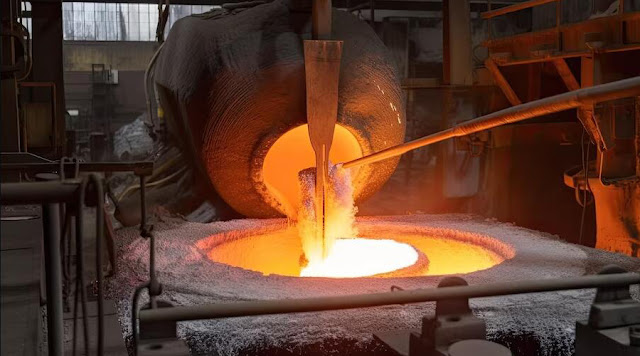Induction Furnace for Steelmaking
The steel industry has been the backbone of industrialization for centuries, providing the necessary materials for infrastructure development and technological advancement. As global steel demand continues to increase, the need for efficient, environmentally friendly steelmaking processes has become critical. In this regard, induction furnaces have become the leader in the steelmaking industry.
Characteristics Of Induction Furnace For Steelmaking
Induction furnace steelmaking is a steelmaking method that uses the induction electric heating effect to heat and melt metal. Its especially suitable for smelting small amounts of high-quality steel and alloys with high-quality raw materials (high-quality scrap steel, ferroalloys, etc.). The vacuum induction furnace equipped with a vacuum system is an important equipment for smelting high-quality alloys.
Induction furnaces for steelmaking offer many advantages over traditional steelmaking methods such as open hearth and electric arc furnaces.
One of the most significant advantages is its energy efficiency. Induction stoves convert almost all energy into heat, thus minimizing energy waste. This energy efficiency not only reduces operating costs but also contributes to a greener, more sustainable steelmaking process.
Another advantage of induction furnace for steelmaking is their flexibility. They can melt a variety of metals, including steel, iron, copper, aluminum and precious metals. This versatility makes induction furnaces valuable assets for steel mills and foundries as they can adapt to changing market demands and produce various types of steel alloys.
IF also provide superior control and precision during the steelmaking process. Their advanced technology enables precise temperature control, ensuring the steel produced reaches the required quality and consistency. In addition, induction furnaces can heat and melt metal quickly, reducing overall processing time and increasing production efficiency.
Safety is another key aspect that makes induction stoves superior to traditional methods. Unlike open hearth and electric arc furnaces, induction furnaces don't produce harmful emissions or generate excess heat. This makes operators safer and reduces the risk of accidents and environmental contamination. Additionally, induction furnace eliminate the need for fuel combustion, reducing reliance on fossil fuels and minimizing the carbon footprint of the steelmaking process.
In recent years, the adoption rate of induction furnace for steelmaking has increased steadily. Steel mills and foundries around the world are recognizing the numerous advantages this technology offers. Demand for induction furnaces is particularly high in developing countries, where the steel industry is growing rapidly and requires cost-effective and sustainable steelmaking solutions.
Its worth mentioning that induction furnace are not without limitations. The initial investment cost of installing an IF can be high, especially for smaller steel producers.
However, the long-term benefits and cost savings often outweigh the initial capital outlay. In addition, induction stoves require stable and reliable power, which can pose challenges in areas with insufficient infrastructure.
In summary, induction furnaces have revolutionized the steelmaking industry by providing energy efficiency, flexibility, precision and safety. Their ability to melt a wide range of metals and produce high-quality steel alloys makes them the first choice for steel mills and foundries around the world.
As demand for steel continues to grow, induction furnaces will play a vital role in meeting this demand while reducing the environmental impact of the steelmaking process.
E-mail: saleswn@hanrm.com / inquiry66@hanmetallurgy.com (Daisy Zhai)
Tel / Whatsapp / Wechat: 0086 17791213533
Xi'an Hani Tech Co., Ltd.



Comments
Post a Comment